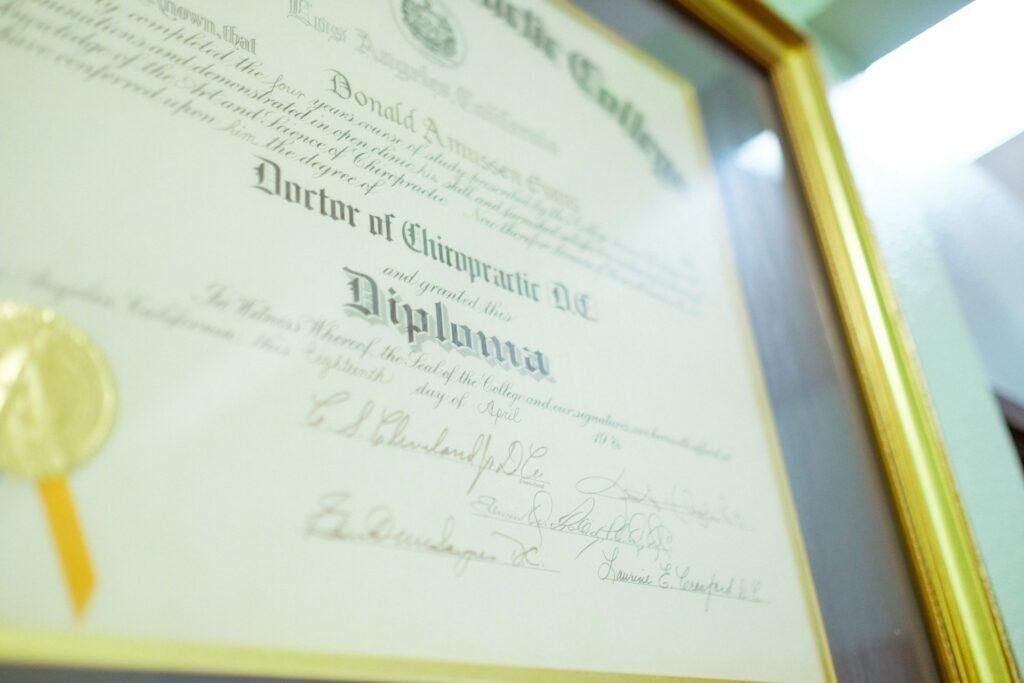Blockchain Credentials: How Digital Diplomas Are Revolutionizing the Process of Academic Verification

Blockchain Credentials: How Digital Diplomas Are Revolutionizing the Process of Academic Verification
The conventional procedure of validating academic qualifications is often time-consuming, bureaucratic, and susceptible to fraud. Both universities and companies are encountering difficulties when it comes to verifying the legitimacy of degrees, transcripts, and certificates, which is causing delays and ambiguity in the process. Blockchain technology has arrived on the scene, promising to transform the way academic accomplishments are distributed, shared, and validated. It is a decentralized, secure, and tamper-proof system that is already starting to change the way we think about academic achievements. The use of blockchain credentials, also known as digital diplomas, is revolutionizing the field of higher education by providing students and institutions alike with an unparalleled level of efficiency and security.
1. What Is a Blockchain Credential?
Blockchain credentials are digital records of academic accomplishments that are held on a blockchain, which is a decentralized ledger that cannot be changed after the fact. The following items are examples of the credentials that may be included:
- Degrees and diplomas
- Transcripts
- Micro-credentials or course completions
- Certifications in professional fields
- Blockchain credentials, in contrast to conventional paper certificates or PDF files, may be checked for authenticity in real time, which helps to avoid counterfeiting and reduce the amount of administrative overhead.
2. The Enhancement of Academic Verification Through the Use of Blockchain
Blockchain technology is able to solve some of the most pressing issues that arise throughout the verification procedure:
Taking Precautions Against Fraud and Ensuring Safety
Credentials are impossible to alter or counterfeit after they have been registered on the blockchain. This guarantees that institutions, licensing organizations, or employers may have confidence in the legitimacy of a student’s accomplishments.
Verification in Real Time
Through the use of blockchain technology, the recruiting and admissions procedures may be expedited by enabling the instantaneous verification of credentials. This is in contrast to the traditional method, which requires waiting days or even weeks for transcripts to be sent by mail or for human verification to take place.
Access that is not centralized
Students have the ability to decide who has access to their credentials, and they may share them directly with educational institutions or businesses without having to depend on middleman agencies to do so.
Administrative Expenses Have Been Reduced
The days of institutions having to manually handle requests for verification are over. This will result in substantial savings in time and resources while also improving efficiency.
3. Benefits for Professionals and Students
There are a number of benefits that students may get from the use of blockchain credentials:
- Portability: Digital diplomas may be easily shared across international boundaries for work or for the pursuit of higher education.
- Transparency: Employers and colleges have the ability to independently check credentials.
- Lifetime Records: Credentials are still available for the duration of one’s life, which minimizes the chance of certificates being lost or destroyed.
- Additionally, professionals may benefit from keeping a certified record of their continuing education, certificates, and skill-building courses in one safe manner.
4. Effects on Educational Institutions and Universities
In an effort to simplify operations and boost their legitimacy, universities are investigating the potential of blockchain technology:
- Decreasing the number of diploma mills and fraudulent activities
- Making it easier to get transcripts and transfer across institutions
- Issuing micro-credentials for online courses in order to encourage lifelong learning
- Making the verification process easier for students who are coming from other countries in order to expand global reach
- Universities that embrace blockchain certificates exhibit technical leadership while also enhancing the services that they provide to their students.
5. Early Adopters and Examples from the Real World
There are many organizations and platforms that are at the forefront of the blockchain credentialing movement:
- Massachusetts Institute of Technology (MIT) Media Lab: Students who completed specialized programs were awarded digital certificates that were recorded on a blockchain.
- Diplomas issued by the University of Nicosia are based on blockchain technology, which allows for safe authentication of graduates’ credentials anywhere in the globe.
- Platforms that provide institutions with the capability to produce blockchain credentials that may be distributed electronically are known as Credly and Learning Machine.
- These instances demonstrate that blockchain is becoming more feasible and accepted in the field of higher education.
6. Challenges and Considerations
Blockchain credentialing has the potential to be very useful, however it is not without its obstacles:
- Standardization: Because different systems may employ different protocols, universal standards for interoperability are required.
- Privacy Concerns: Student information has to be safeguarded while also ensuring that it is verifiable.
- Barriers to Adoption: Because of factors such as cost, technical complexity, and regulatory concerns, some institutions are hesitant to adopt new technologies.
- Digital Literacy: In order to successfully access and validate blockchain credentials, both students and employers must be knowledgeable about these things.
- In order for blockchain credentials to be adopted by the general public, it is necessary to overcome these barriers.
7. The Future of Academic Verification
The way academic credentials are verified may be entirely different in the future if blockchain technology becomes more widely adopted:
- Employers that operate on an international scale may check credentials instantaneously without having to get in touch with the universities.
- Lifelong learning portfolios, which represent continuous skill gain, may be preserved in a digital format.
- It is possible that micro-credentials and professional certifications could soon be considered to be just as respectable as conventional academic degrees.
- Processes like recruiting, admissions, and licensing might be automated with the help of blockchain technology if it were integrated with artificial intelligence and smart contracts.
- The integration of blockchain technology, artificial intelligence (AI), and digital education platforms has the potential to create a more transparent, secure, and efficient academic environment.
The manner that academic accomplishments are awarded, distributed, and confirmed has been revolutionized by blockchain credentials, which constitute a significant advancement in the field. They provide students, professionals, and institutions with the ability to exercise more control over their lives by verifying authenticity, facilitating immediate verification, and alleviating the administrative load. The increasing implementation of blockchain technology in higher education institutions is an indication of a future in which credentials will be more secure, transferable, and trustworthy than they have ever been before, despite the fact that there are still obstacles to overcome. Blockchain technology may change what it means to get academic certification in this new digital age.




